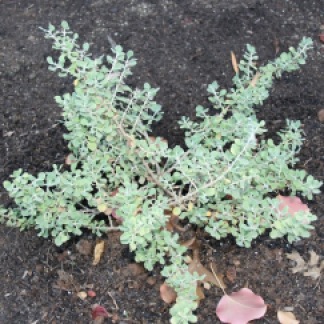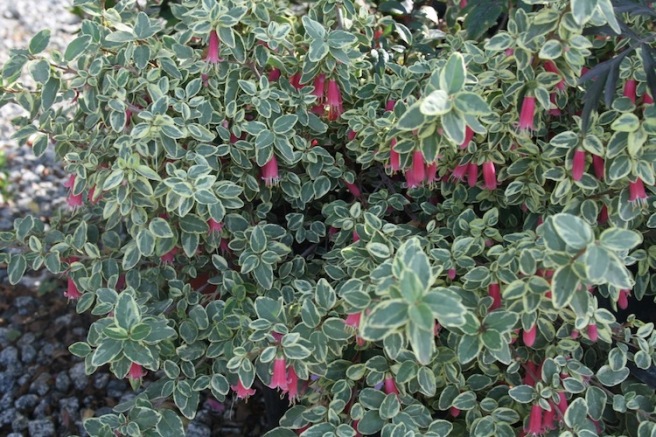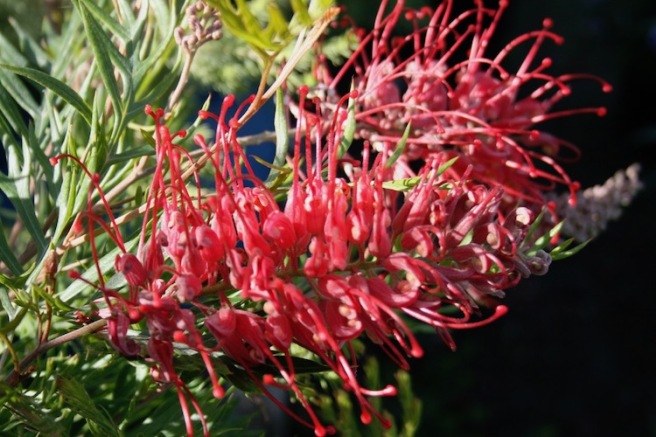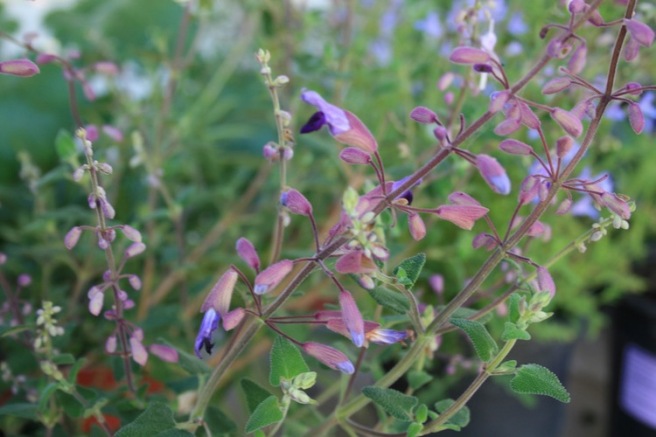
I recently wrapped up the seemingly interminable lawn removal/replanting of the long side yard bed between our side fence and the street. Living on a corner lot comes with blessings and curses. The biggest advantage is a little more privacy as we have no neighbor on one side. The curse (challenge?) is having a lot of area to landscape and maintain which is pretty well disconnected from the rest of our front garden and is not visible from any where inside our home.
As I have chronicled in several other posts, in June 2016 we initially chemically killed the ragged Heinz 57 variety grass planted the length of this approximately 140 foot bed along with grass in 3 other areas, including the large driveway circle bed tucked between our two driveways. We finished the replanting of the other areas very early in 2017 and they all had successful summers. Our stamina flagged and the heat came and so we did not get back to it until fall 2017. Check out posts Now THIS is a Labor Day… to see the great rock relocation project; Autumn musings… for the plantings closest the driveway and A little cleanup and a few new friends… to see the second wave of new plants added to the bed.
We left number of the original elements in the bed, including 3 Bradford pear trees, which are all planted smack up against the fence. The trees are critical to us for privacy plus shade AND as 2 of the 3 are original (18 yrs old) to the landscape I deemed removal of some of the shrubbery whose roots are amongst and surrounded by tree roots to be a risk without benefit. The Rhaphiolepis indica and nandinas of unknown cultivar were trimmed up, along with several mature podacarpus, variety also unknown.
The pear trees drop an unbelievable number of leaves over a couple of weeks in late winter, usually early to mid January depending on the weather. The last areas of new plants and final mulching down had to wait until leaf fall was completed and cleaned up. Their bare limb stage is very brief and they are all ready showing buds.

It is almost impossible to photograph this bed without crossing the street and standing on my neighbor’s porch! Even though many of my plant selections look very small–I opted for 1 gallon on almost everything–quite a few will be large scale shrubbery at maturity. A number of my SLO Botanical Garden purchases went in this bed. My goal is moderate to low water usage. The trees need regular water so I had to find a balance of materials that would tolerate summer water. As each section was hand dug around major tree roots and planting points determined, every hole was filled with water to sit overnight to test drainage. Luckily I had to change only one intended planting spot–far fewer than I had anticipated!

Looking from the furthest point back toward the driveway. This pitiful tree is a crape myrtle that we moved about 5 years ago. It also was right up against the fence and we moved it midway between the fence and street. Last summer the tree actually bloomed for the first time ever since we purchased the house in 2008. It is a gorgeous, clear purple–possibly a ‘Catawba’. At the base of the tree is a 2 year old colony of Convolvulus mauritanica ‘Moroccan Blue’. There are also quite a few bearded iris in blues, whites, and purples that have been moved to this sunny end over the years as I have had divisions with no other place to go. Two lavender lantana will fill the area closest the curb–readily available and easy to get going. I am using them throughout these renovations as filler plants while more permanent shrubs mature.

The area fully in the shade canopy of the pear trees needed an evergreen backdrop and I chose Pieris japonica ‘Tiki’ to fill the bill. The common name of this plant, lily of the valley shrub, is evocative of the pink to white pearl like clusters of drooping blossoms. ‘Tiki’ is on the smaller side of the pieris selections, topping at about 3-4′ tall. My group of 5 should make a nice show once all the buds open!

Also in the shade canopy area but getting a good bit of the rising sun I added a hardy geranium with chocolate hued foliage. This unmarked find came from Branches & Barrels in Encinitas, a great little garden and event center in north San Diego county. It has lots of new foliage, a brighter green than the more mature leaves, and I anticipate that when I have blooms I may be able to identify it from my resource library. It is hard for me to leave a hardy geranium not already in my collection behind for someone else to snap up!


No shady area in my garden is ever complete without a few hellebores. I added 2 groups of three plants each, hoping for a pretty full look in a reasonable period of time. The top photo is Helleborus orientalis ‘NW Cotton Candy’. Its ruffled double light pink flower has darker pink veins–the first one opened yesterday and you can see it up close at the beginning of the post. The single pink flower just above is Helleborus orientalis ‘Pink Frost’. As this bed slopes nicely from the fence to the street it affords a better view of the flowers than if it were totally flat. I hope to have placed them forward enough to catch the morning sun but back enough not be trampled by people getting out of parked cars.

Another Branches & Barrels find is Leptospermum scoparium ‘Star Carpet’, or prostrate white tea tree. The foreground of the center pear tree is ground zero in its need for a cast iron plant selection. It is sloped more sharply than the surrounding areas and to find planting crevices amongst the mature, close to the surface roots is challenging. The reference material for this lesser known variety of the upright New Zealand tea tree characterizes it as a good bank cover tolerating dry conditions. The leaves are tiny but plentiful on delicate weeping branches which should spread 6-8 feet. The wild card on this one will be sun–hopefully the morning sun will be adequate for production of its small star shaped white flowers. I think dry shade is perhaps the hardest condition for which to find plants. Three of these went in the ground about 2 weeks ago and I do have new growth. Everyone, keep your fingers crossed!

The canopy opens up near the newest of the pear trees, requiring plants with more sun tolerance. Even though this bed faces east and gets only morning sun; that sun can be quite strong at the peak of summer. Complicating the issue is that, over time, the area will be ever more shaded. At some point there will be more shade than sun except in the very early hours of the day. Breath of Heaven is an evergreen shrub native to South Africa and much used in my valley as foundation plantings. Their delicate character is appealing and their leaves are aromatic when bruised. The Coleonema pulchellum ‘Sunset Gold’ is lower than the species and bears tiny pink flowers on yellow gold stems. It has actually been kind of fun trying a little bit of this and a little bit of that in this new bed!
The plants below were described in the previous posts about this bed renovation but here’s a look at them one more time.
Left: Teucrium betonicum Right: Leucophyllum langmaniae ‘Lynn’s Everblooming’
Left: Grevillea ‘Pink Pearl’ Right: Cotoneaster horizontalis variegatus
Left: Plumbago auriculata ‘Alba’ Right: Lonicera nitida ‘Lemon Beauty’
Left: Chamaecyparis pisifera ‘Sungold’ Right: Dorycnium hirsutum
The larger part of the bed has filled in very well–most plants were added in October. We did have the treelike weeping juniper professionally trimmed in late summer and I think it looks better than it ever has.


No doubt I will add a few more bits and pieces over time–a plant collector’s wheelbarrow is never truly full–but I feel as though the time is right to let this initial go around of plants settle in and see how they fare through the summer.













































